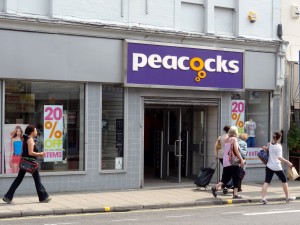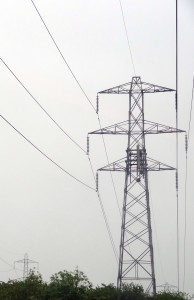 Advertising is a costly venture, but for firms in a highly competitive market it can be essential for success. During the recession, many firms had to make a variety of cut backs and reduced advertising for many was one of the key areas to go.
Advertising is a costly venture, but for firms in a highly competitive market it can be essential for success. During the recession, many firms had to make a variety of cut backs and reduced advertising for many was one of the key areas to go.
However, one of the leading advertising companies – WPP – has posted significant profits this year, which are up by some 18.5%, reaching £1.008bn. According to Sir Martin Sorrell, a key factor in this success is that many firms, whilst not looking to increase their market share, have felt the need to continue advertising, simply to maintain their existing market share. This has become especially important in growing markets, as competition has become more and more intense.
This new is not only good for the company in question, but also for the UK economy, as the firm has said that it will be moving its headquarters back from Ireland to the UK. This is assuming that legislation is passed concerning the taxation of profits earned abroad. If this relocation does go ahead, it could mean the creation of many more jobs in the UK and a boost to tax revenues, both of which are crucial for the UK economy. As Sir Martin Sorrell said:
‘I am delighted to say that the last remaining issues I think have been removed subject to legislation being introduced in Parliament. We will be coming back subject to shareholder approval’.
WPP believes growth throughout 2012 will be high, due to events such as the Olympics and the US Presidential elections, together with its strength in emerging economies. At the moment, this all looks like good new for the UK and oh how it’s needed!
WPP profit up ahead of 2012 Olympics boost Reuters (1/3/12)
WPP’s Martin Sorrell says he is likely to move HQ back to London Guardian, Mark Sweney (1/3/12)
Olympics, Election to boost WPP Wall Street Journal, Kathy Gordon (1/3/12)
WPP breaks £1bn profit barrier Guardian, Mark Sweney (1/3/12)
WPP boosts dividend after strong year Financial Times, Tim Bradshaw and Mark Wembridge (1/3/12)
WPP profits reach record in 2011 BBC News (1/3/12)
Questions
- What is market share and how can it be calculated?.
- What is the purpose of advertising. Using a supply and demand diagram, illustrate the effect the advertising should have. Think about the position and the shape of the curves.
- Why is advertising an area that did see cut backs throughout the recession?
- Do you think that advertising is more important for firms in growing markets? Explain your answer.
- Why did WPP relocate to Ireland and what may bring it back to the UK?
- How have WPP’s dividend payments been affected by this latest profit information?
- During a recession, competition tends to become more intense. Why is this and what role does advertising play?
 It’s not the first retailer to go into administration and it won’t be the last, but the well-known high street retailer Peacocks will continue to trade for the foreseeable future thanks to Edinburgh Woolen Mill.
It’s not the first retailer to go into administration and it won’t be the last, but the well-known high street retailer Peacocks will continue to trade for the foreseeable future thanks to Edinburgh Woolen Mill.
The administrators were called in at the beginning of 2012, as Peacocks total debt reach £750 million and it was unable to restructure £240 million of this debt. Edinburgh Woollen Mill has bought the company out of administration, protecting 6000 jobs in the UK. However, at the same time more than 3000 workers will be made redundant, as 224 stores cease trading.
Throughout the recession, retailers across the UK have been struggling, as household incomes have remained low, causing consumer spending to fall. One of the administrators from KMPG, commented that:
‘This (the low consumer demand), combined with a surplus of stores and unsustainable capital structure, led to the business becoming financially unviable.’
 The coming months will be crucial in determining whether more jobs are lost and if there are any further store closures. Much hinges on the ability of Edinburgh Woollen Mill to stabilize the financial performance of Peacocks and stimulate renewed customer demand. The following articles consider this take-over.
The coming months will be crucial in determining whether more jobs are lost and if there are any further store closures. Much hinges on the ability of Edinburgh Woollen Mill to stabilize the financial performance of Peacocks and stimulate renewed customer demand. The following articles consider this take-over.
Peacocks closes 19 Ulster stores with 263 job losses Belfast Telegraph (23/2/12)
Peacocks Takeover: Edinburgh Woollen Mill buy retailer but 3,100 jobs lost BBC News (including video) (22/2/12)
Peacocks piqued by PIKs Guardian, Nils Pratley (22/2/12)
Edinburgh Woollen Mill buys Peacocks Independent, James Thompson (23/2/12)
Peacocks sold to Edinburgh Woollen Mill – KPMG The Wall Street Journal, Jessica Hodgson (23/2/12)
Questions
- Why has consumer demand in the retails sector fallen during the recession?
- What type of take-over would you classify this as?
- Who are Peacocks’ main competitors? In which market structure would you place the retail sector? Explain your answer.
- The Guardian article refers to the Management-buy-out of Peacocks in 2005. What is a management-buy-out? What were the problems associated with it?
- What are the problems that have been identified as causing Peacocks to go into administration?
- To what extent do you think the Management-buy-out of 2005 is the main reason why Peacocks has fallen into administration?
 Last year, we felt the cost of the cold weather and whilst we haven’t seen such low temperatures this year, gas shortages are also emerging. Across Eastern Europe, temperatures have fallen well below -30ºC and so demand for gas has unsurprisingly increased.
Last year, we felt the cost of the cold weather and whilst we haven’t seen such low temperatures this year, gas shortages are also emerging. Across Eastern Europe, temperatures have fallen well below -30ºC and so demand for gas has unsurprisingly increased.
Thanks to these low temperatures, Russian gas supplies are running low and several countries have seen their deliveries of gas fall. However, the Russian gas monopoly, Gazprom has said that supplies have not been cut and that it has been exporting more gas during these cold times. The blame, according to Alexander Medvedev (the Deputy CEO of Gazprom), lies with the Ukraine taking gas at a pace significantly above contracted levels. The following articles consider this issue.
Russia, Ukraine argue over gas as EU reports shortage Reuters (2/2/12)
Freezing Europe hit by Russian gas shortage BBC News (4/2/12)
Gazprom says ‘Perplexed’ by EU supply drop as Ukraine takes gas Bloomberg BusinessWeek, Anna Shiryaevskaya (3/2/12)
Gazprom cuts gas supplies amid cold snap Financial Times, Guy Chazan (3/2/12)
Gazprom ‘unable to pump extra gas to Europe’ Associated Press (4/2/12)
Questions
- Using a demand and supply diagram, illustrate what we would expect to see with a gas shortage.
- What has been the cause of this current gas shortage? Use a diagram to illustrate the causes.
- What would you expect to happen to prices following this gas shortage?
- Gazprom is said to be a monopoly: what are the characteristics of a monopoly?
- As there are other gas suppliers, how can Gazprom be said to be a monopolist?
 Every firm has been hit by the recession and for most, it’s been bad news. However, the latest firm to file for bankruptcy is an interesting case, as the causes extend well beyond a weak economy. The company in question? Eastman Kodak. Renowned for inventing the hand-held camera and being the market leader, selling 90% of photographic film and 85% of all cameras in the USA in 1976, the company has since seen a large change in its fortunes.
Every firm has been hit by the recession and for most, it’s been bad news. However, the latest firm to file for bankruptcy is an interesting case, as the causes extend well beyond a weak economy. The company in question? Eastman Kodak. Renowned for inventing the hand-held camera and being the market leader, selling 90% of photographic film and 85% of all cameras in the USA in 1976, the company has since seen a large change in its fortunes.
Massive competition has emerged from all over the globe and the company has seemed to lag behind the digital revolution. Arguably, unwilling to take risks and making some strategic errors, Kodak saw its stock tumble from $94 in 1997 to under $1 per share in 2012. Since 2004, Kodak has only seen one profitable year. With massive competitors in the world of digital photography, the market has become a highly competitive one. As Rupert Goodwins, the editor of technology website ZDNet said:Kodak made all its money from selling film, then the digital camera came along and now no-one’s buying film. It’s not like they didn’t see it coming. Kodak hesitated because they didn’t want to eviscerate their business.
By filing for bankruptcy, Kodak is protected and its operations will continue for the time being, perhaps giving the company time to have a rethink and a reorganization. Eastman Kodak has previously tried to take a new direction and has been moving away from film and towards its printer, software and packing businesses. The problem is that these markets already have some very strong competitors: Hewlett Packard, Canon and Epson. It’s a difficult job to break into this market and gain market share.
The future of the company is very much in the balance and as reorganization of its operations looks inevitable, so does a loss of jobs. Thank goodness it only employs some 19,000 workers and not the 145,000 it did back in its day. Bankruptcy will certainly keep the creditors at bay for the time being, but it is by no means a long term solution to the company’s ailing profits. The following articles consider this ‘Kodak moment’.
Eastman Kodak files for bankruptcy protection BBC News (19/1/12)
Eastman Kodak files for bankruptcy The Christian Science Monitor, Ben Dobbin (19/1/12)
Kodak: From Brownie and roll film to digital disaster BBC News, James Cowling (19/1/12)
Kodak files for bankruptcy CNN Money, Aaron Smith and Hibah Yousuf (19/1/12)
Photography pioneer Kodak files for bankruptcy Reuters, Jonathan Stempel (19/1/12)
Kodak: 30 fascinating facts The Telegraph, Matthew Sparkes (19/1/12)
Kodak: why the moment has oassed Guardian, Simon Waldman (19/1/12)
Questions
- Using the product life cycle, explain where Kodak currently lies.
- To what extent are Kodak’s current problems related to the obsolescence of their products and not the recession?
- What strategic errors have Kodak made?
- What has caused Kodak’s collapse in share prices and profitability?
- Why is Eastman Kodak finding it difficult to gain market share in other markets, such as printing?
- What options are open to Kodak for the future if it is to become profitable once more?
 In an earlier blog Energy profits margins up by over 700% we analysed the increasing pressure on many households as they saw their energy bills increase in price year on year. This helped the big six energy companies achieve a 700% rise in their profits.
In an earlier blog Energy profits margins up by over 700% we analysed the increasing pressure on many households as they saw their energy bills increase in price year on year. This helped the big six energy companies achieve a 700% rise in their profits.
However, it also sparked interest by the regulator Ofgem, which was looking to ensure that consumers found it easier to make price comparisons and create a more competitive market. One issue that Ofgem were looking into was how to make the energy sector more open to competition, given that the big six companies own the power stations and hence this acts as a barrier to the entry of new firms.
The latest announcements from some of the big energy companies will therefore come as a pleasant turn of events for Ofgem. On Wednesday January 11th 2012, EDF announced that it would be cutting its energy prices by 5% from 7th February in response to a fall in wholesale costs. Only a day later, Npower announced its plans to cut its tariffs by 5% from 1st February. British Gas cut its prices by 5% with immediate effect and SSE will reduce its gas prices by 4.5% from March 26th.
Is this a sign that the market is becoming more competitive thanks to Ofgem or is there another explanation? For the past 2 winters, temperatures have been consistently below freezing and hence demand for gas/electricity was at an all time high, speaking concerns of gas shortages. However, with the mild winter we are currently experiencing (I hope I haven’t jinxed it!) demand for heating etc has been significantly lower, which has reduced wholesale costs and the big six companies have begun to pass these savings on to their customers. Yet, despite this seemingly good news, are they being as ‘kind’ as we think? Most of the companies are cutting their prices by about 5%, yet wholesale prices fell by significantly more than that. Furthermore, over the past few years, customers have seen their tariffs increase significantly – by a lot more than 5%. To some extent, this confirms the criticism levelled at the energy sector – when costs rise, they are quick to pass on the full costs to their customers. But, when costs fall, they are slow to pass on only a fraction of their cost savings. The following articles consider this issue.
Npower will cut gas prices by 5% BBC News (13/1/12)
EDF cuts gas price by 5% Reuters, Karolin Schaps and Henning Gloystein (11/1/12)
British Gas readies push to promote price cut MarketingWeek, Lara O’Reilly (13/1/12)
British Gas cuts prices by 5% Independent (13/1/12)
Energy suppliers do battle in the war of modest price cuts The Telegraph, Emily Godsen (13/1/12)
British Gas and SSE follow EDF Energy price cut Financial Times, Guy Chazan and Sylvia Pfeifer (11/1/12)
British Gas cuts electricity prices, but keeps gas on hold Guardian, Hillary Osborne (12/1/12)
British gas and SSE announce price cuts (including video) BBC News (12/1/12)
More power firms cut energy tariffs The Press Association (12/1/12)
Questions
- In which market structure would you place the energy sector? Explain your answer.
- What is the role of Ofgem? What powers does it (and the other regulators have)?
- Using a demand and supply diagram to help you, explain why wholesale costs have fallen.
- Why have the energy companies only passed on about 5% of cost savings to their customers, despite falls in wholesale costs of significantly more than that?
- Do you think price wars are likely to break out in this sector? Are they in the interests of consumers?
- Why did energy prices increase so quickly last year and the year before? Use a diagram to help you.
 Advertising is a costly venture, but for firms in a highly competitive market it can be essential for success. During the recession, many firms had to make a variety of cut backs and reduced advertising for many was one of the key areas to go.
Advertising is a costly venture, but for firms in a highly competitive market it can be essential for success. During the recession, many firms had to make a variety of cut backs and reduced advertising for many was one of the key areas to go.



